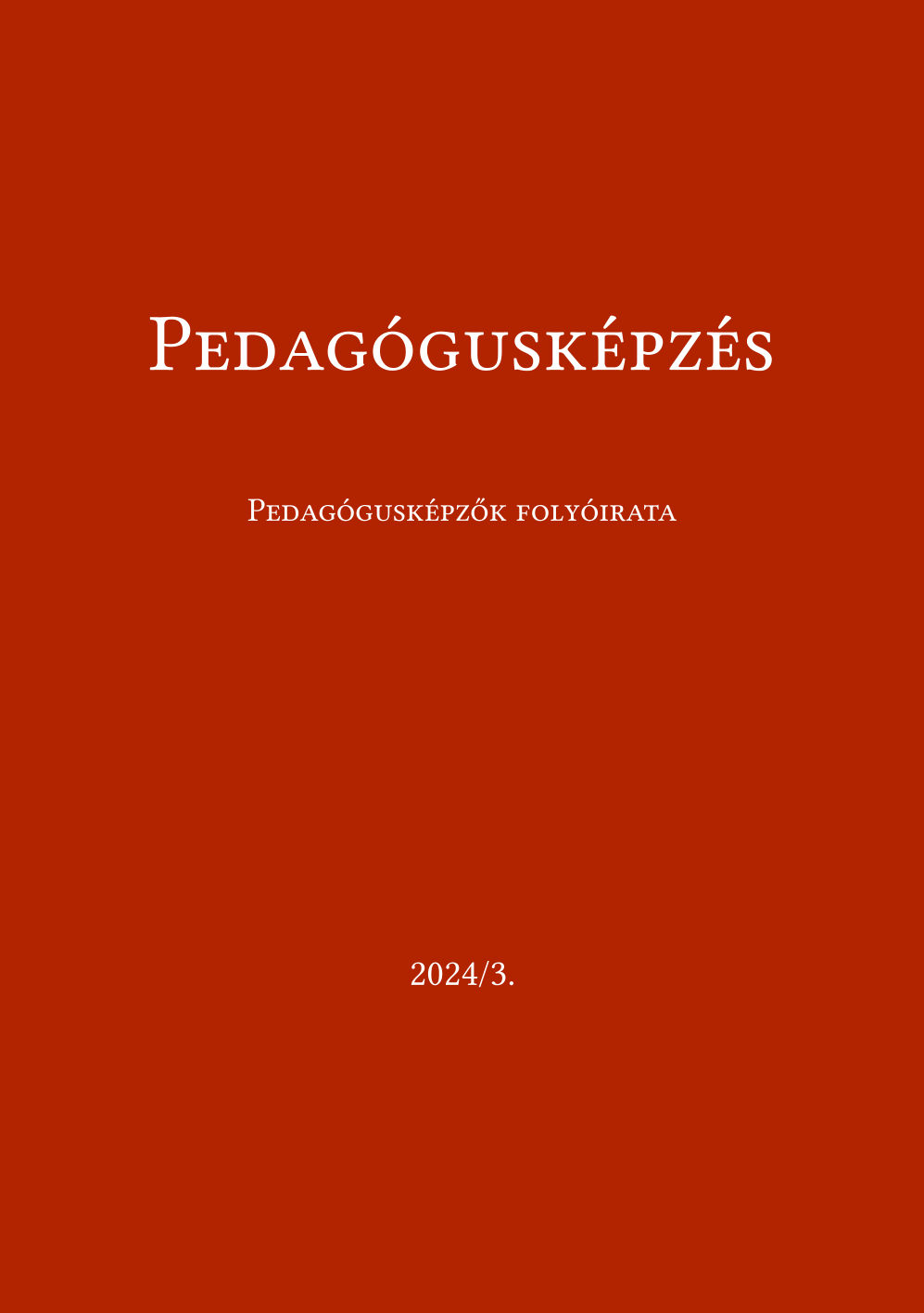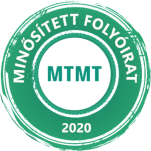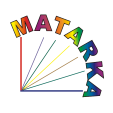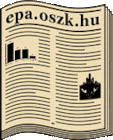Egyetemi hallgatók fizikai aktivitása és annak tanulásra gyakorolt hatása – pedagógiai és tanárképzési implikációk
DOI:
https://doi.org/10.37205/TEL-hun.2024.3.04Kulcsszavak:
fizikai aktivitás, tanulmányi eredmény, diákok, egyetemisták, üléssel töltött idő, tanári felelősségAbsztrakt
Több tanulmány kimutatta, hogy a fizikailag aktív diákok és hallgatók általában magasabb tanulmányi teljesítményt érnek el, mint kevésbé aktív társaik.
A fizikai aktivitás számos fizikai és mentális előnnyel jár, mely a tanulmányok mellett a mindennapi életre is kihat. Ezen tanulmány célja, hogy felmérje a fizikai aktivitás és a tanulmányi eredmények közötti kapcsolatot egyetemi hallgatók körében, s ennek kapcsán rámutasson arra, hogy a fizikai aktivitás igényének és feltételeinek megteremtésére való felkészülés a pedagógusképzés fontos feladata. A keresztmetszeti vizsgálatban 18–31 éves (átlagéletkor: 20,51 ± 1,59 év) egyetemi hallgatók (N = 670) vettek részt. A szociodemográfiai jellemzőkre egy online kérdőív formájában kérdeztünk rá. A fizikai aktivitás szintjét az International Physical Activity Questionnaire (IPAQ) rövid verziójával, a tanulmányi teljesítményt pedig a kitöltést megelőző tanulmányi félév súlyozott átlaga alapján értékeltük.
Az eredmények pozitív összefüggést mutattak a tanulmányi átlag és a fizikai aktivitás között (p<0,05). Azonban ezek mellett például a nemnek, a családi helyzetnek, a munkának és az életvitelnek is kiemelkedő hatása lehet a fentiekre képzési típustól függetlenül. A pedagógusoknak köszönhetően a korai, fizikai aktivitással kapcsolatos beavatkozások élethosszig tartó jó szokásokat alakíthatnak ki, ami számos egészségügyi előnnyel járhat.
Hivatkozások
/2012 [VI. & 4.] Korm. rendelet. (2012). 110/2012. (VI. 4.) Korm. rendelet a Nemzeti alaptanterv kiadásáról, bevezetéséről és alkalmazásáról – Hatályos Jogszabályok Gyűjteménye. https://net.jogtar.hu/jogszabaly?docid=a1200110.kor
Ács, P., Betlehem, J., Oláh, A., Bergier, B., Morvay-Sey, K., Makai, A. & Prémusz, V. (2020). Cross-cultural adaptation and validation of the Global Physical Activity Questionnaire among healthy Hungarian adults. BMC Public Health, 20(1), 1056. https://doi.org/10.1186/s12889-020-08477-z
Alkhateeb, S. A., Alkhameesi, N. F., Lamfon, G. N., Khawandanh, S. Z., Kurdi, L. K., Faran, M. Y., Khoja, A. A., Bukhari, L. M., Aljahdali, H. R., Ashour, N. A., Bagasi, H. T., Delli, R. A., Khoja, O. A. & Safdar, O. Y. (2019). Pattern of physical exercise practice among university students in the Kingdom of Saudi Arabia (before beginning and during college): A cross-sectional study. BMC Public Health, 19(1), 1716. https://doi.org/10.1186/s12889-019-8093-2
Bailey, R. (2006). Physical education and sport in schools: A review of benefits and outcomes. The Journal of School Health, 76(8), 397–401. https://doi.org/10.1111/j.1746-1561.2006.00132.x
Balatoni, I., Varga Szepne, H., Muller, A., Kovacs, S., Kosztin, N. & Csernoch, L. (2019). Sporting habits of university students in Hungary. Baltic Journal of Health and Physical Activity, 11(6), 5.
Brown, C. E. B., Richardson, K., Halil-Pizzirani, B., Atkins, L., Yücel, M. & Segrave, R. A. (2024). Key influences on university students’ physical activity: A systematic review using the Theoretical Domains Framework and the COM-B model of human behaviour. BMC Public Health, 24(1), 418. https://doi.org/10.1186/s12889-023-17621-4
Bueno, M. R. de O., Werneck, A. de O., Silva, D. R. P. da, Oyeyemi, A. L., Zambrin, L. F., Fernandes, R. A., Helio Serassuelo, J., Romanzini, M. & Ronque, E. R. V. (2022). Association between patterns of sedentary time and academic performance in adolescents: The mediating role of self-concept. Revista Paulista de Pediatria, 40, e2021106. https://doi.org/10.1590/1984-0462/2022/40/2021106IN
Bull, F. C., Al-Ansari, S. S., Biddle, S., Borodulin, K., Buman, M. P., Cardon, G., Carty, C., Chaput, J.-P., Chastin, S., Chou, R., Dempsey, P. C., DiPietro, L., Ekelund, U., Firth, J., Friedenreich, C. M., Garcia, L., Gichu, M., Jago, R., Katzmarzyk, P. T., … & Willumsen, J. F. (2020). World Health Organization 2020 guidelines on physical activity and sedentary behaviour. British Journal of Sports Medicine, 54(24), 1451. https://doi.org/10.1136/bjsports-2020-102955
Caldas, R., Almeida, M., Carballo, F., Valerio, F., Silva, V., Santos, M., Oliveira, T., Nascimento, M., Silva, D., Santos, F. & Duarte, L. (2024). The importance of physical activity for the prevention of Chronic Non-Communicable Diseases (NCDs). Seven Editora. https://doi.org/10.56238/sevened2024.007-088
Campbell, F., Blank, L., Cantrell, A., Baxter, S., Blackmore, C., Dixon, J. & Goyder, E. (2022). Factors that influence mental health of university and college students in the UK. A systematic review. BMC Public Health, 22(1), 1778. https://doi.org/10.1186/s12889-022-13943-x
Castelli, D. M., Hillman, C. H., Buck, S. M. & Erwin, H. E. (2007). Physical fitness and academic achievement in third- and fifth-grade students. Journal of Sport & Exercise Psychology, 29(2), 239–252. https://doi.org/10.1123/jsep.29.2.239
Castro, O., Bennie, J., Vergeer, I., Bosselut, G. & Biddle, S. J. H. (2020). How Sedentary Are University Students? A Systematic Review and Meta-Analysis. Prevention Science: The Official Journal of the Society for Prevention Research, 21(3), 332–343. https://doi.org/10.1007/s11121-020-01093-8
Chacón-Cuberos, R., Zurita-Ortega, F., Ramírez-Granizo, I. & Castro-Sánchez, M. (2020). Physical Activity and Academic Performance in Children and Preadolescents: A Systematic Review – INEFC. https://revista-apunts.com/en/physical-activity-and-academic-performance-in-children-and-preadolescents-a-systematic-review/
Chen, K., Liu, F., Mou, L., Zhao, P. & Guo, L. (2022). How physical exercise impacts academic burnout in college students: The mediating effects of self-efficacy and resilience. Frontiers in Psychology, 13. https://doi.org/10.3389/fpsyg.2022.964169
Chomistek, A. K., Cook, N. R., Flint, A. J. & Rimm, E. B. (2012). Vigorous-intensity leisure-time physical activity and risk of major chronic disease in men. Medicine and Science in Sports and Exercise, 44(10), 1898–1905. https://doi.org/10.1249/MSS.0b013e31825a68f3
Cotman, C. W., Berchtold, N. C. & Christie, L.-A. (2007). Exercise builds brain health: Key roles of growth factor cascades and inflammation. Trends in Neurosciences, 30(9), 464–472. https://doi.org/10.1016/j.tins.2007.06.011
Czabai, V., Bíró, M. & Hajdu, P. (2018). Az Eszterházy Károly Főiskola hallgatóinak életmódja, sportolási szokásai. Az Eszterházy Károly Főiskola tudományos közleményei (Új sorozat 34. köt.). Vizsgálatok a sporttudomány és az egészségturizmus területén = Acta Academiae Paedagogicae Agriensis. Sectio Sport, 29–38.
Dayıoğlu, M. & Türüt-Aşik, S. (2007). Gender differences in academic performance in a large public university in Turkey. Higher Education, 53, 255–277. https://doi.org/10.1007/s10734-005-2464-6
Deliens, T., Clarys, P., De Bourdeaudhuij, I. & Deforche, B. (2013). Weight, socio-demographics, and health behaviour related correlates of academic performance in first year university students. Nutrition Journal, 12(1), 162. https://doi.org/10.1186/1475-2891-12-162
Dengiz, D. D. (2020). How prolonged sitting influences students’ health [Info:eu-repo/semantics/bachelorThesis]. University of Twente. http://essay.utwente.nl/81775/
DeSimone, J. S. (2008). The Impact of Employment during School on College Student Academic Performance (Working Paper 14006). National Bureau of Economic Research. https://doi.org/10.3386/w14006
Donnelly, J. E., Hillman, C. H., Castelli, D., Etnier, J. L., Lee, S., Tomporowski, P., Lambourne, K. & Szabo-Reed, A. N. (2016). Physical Activity, Fitness, Cognitive Function, and Academic Achievement in Children: A Systematic Review. Medicine and Science in Sports and Exercise, 48(6), 1197. https://doi.org/10.1249/MSS.0000000000000901
Dunn, A. L., Trivedi, M. H. & O’neal, H. A. (2001). Physical activity dose-response effects on outcomes of depression and anxiety. Medicine & Science in Sports & Exercise, 33(6), 587. https://doi.org/10.1097/00005768-200106001-00027
ECTS. (2015). European Credit Transfer and Accumulation System (ECTS)—European Education Area. https://education.ec.europa.eu/education-levels/higher-education/inclusive-and-connected-higher-education/european-credit-transfer-and-accumulation-system (2024.09.27.)
elte.hu. (2024). Sportolási lehetőségek Budapesten. www.elte.hu. https://www.elte.hu/content/sportolasi-lehetosegek-budapesten.t.77 (2024.09.28.)
elte.hu. (2024). Sportolj kreditért! www.elte.hu. https://www.elte.hu/content/sportolj-kreditert.t.31003 (2024.09.28.)
Felez-Nobrega, M., Hillman, C. H., Dowd, K. P., Cirera, E. & Puig-Ribera, A. (2018). ActivPAL™ determined sedentary behaviour, physical activity and academic achievement in college students. Journal of Sports Sciences, 36(20), 2311–2316. https://doi.org/10.1080/02640414.2018.1451212
Garcia, L., Pearce, M., Abbas, A., Mok, A., Strain, T., Ali, S., Crippa, A., Dempsey, P. C., Golubic, R., Kelly, P., Laird, Y., McNamara, E., Moore, S., de Sa, T. H., Smith, A. D., Wijndaele, K., Woodcock, J. & Brage, S. (2023). Non-occupational physical activity and risk of cardiovascular disease, cancer and mortality outcomes: A dose-response meta-analysis of large prospective studies. British Journal of Sports Medicine, 57(15), 979–989. https://doi.org/10.1136/bjsports-2022-105669
Gilmore, L., Sullivan, K. A. & Hughes, B. (2024). Incorporating physical activities in teaching practice. Australian Journal of Education, 68(2), 145–156. https://doi.org/10.1177/00049441241244553
Gómez-Fernández, N. & Albert, J.-F. (2020). Physical activity in and out-of-school and academic performance in Spain. Health Education Journal, 79(7), 788–801. https://doi.org/10.1177/0017896920929743
Haapala, E. A., Väistö, J., Lintu, N., Westgate, K., Ekelund, U., Poikkeus, A.-M., Brage, S. & Lakka, T. A. (2017). Physical activity and sedentary time in relation to academic achievement in children. Journal of Science and Medicine in Sport, 20(6), 583. https://doi.org/10.1016/j.jsams.2016.11.003
Hale, G. E., Colquhoun, L., Lancastle, D., Lewis, N. & Tyson, P. J. (2021). Review: Physical activity interventions for the mental health and well-being of adolescents – a systematic review. Child and Adolescent Mental Health, 26(4), 357–368. https://doi.org/10.1111/camh.12485
Hariyanto, A., Sholikhah, A. M., Mustar, Y. S., Pramono, B. A. & Putera, S. H. P. (2023). Physical Activity and Its Relation to Academic Performance Among University Students. In The Authors R. Harold Elby Sendouw et al. (Eds.), UNICSSH 2022, ASSEHR 698 (pp.712–720). https://doi.org/10.2991/978-2-494069-35-0_88
Harris, M. A. (2018). The relationship between physical inactivity and mental wellbeing: Findings from a gamification-based community-wide physical activity intervention. Health Psychology Open, 5(1), 2055102917753853. https://doi.org/10.1177/2055102917753853
Howie, E. K. & Pate, R. R. (2012). Physical activity and academic achievement in children: A historical perspective. Journal of Sport and Health Science, 1(3), 160–169. https://doi.org/10.1016/j.jshs.2012.09.003
Irwin, J. D. (2004). Prevalence of University Students’ Sufficient Physical Activity: A Systematic Review. Perceptual and Motor Skills, 98(3), 927–943. https://doi.org/10.2466/pms.98.3.927-943
Jiang, M., Gao, K., Wu, Z. & Guo, P. (2022). The influence of academic pressure on adolescents’ problem behavior: Chain mediating effects of self-control, parent–child conflict, and subjective well-being. Frontiers in Psychology, 13, 954330. https://doi.org/10.3389/fpsyg.2022.954330
Kaj, M., Tékus, É., Juhász, I., Stomp, K. & Wilhelm, M. (2015). Changes in physical fitness of Hungarian college students in the last fifteen years. Acta Biologica Hungarica, 66(3), 270–281. https://doi.org/10.1556/018.66.2015.3.3
Karner, O., Kiss M., Oroszné Perger M., Füleki B., Franczia N., Török L., Csikai E. & Sebő T. (2021). Magyarországi felsőoktatásban tanuló hallgatók mentális jóllétének felmérése – Kutatási beszámoló | Felsőoktatási Tanácsadás Egyesület. https://www.feta.hu/kutatas/magyarorszagi-felsooktatasban-tanulo-hallgatok-mentalis-jolletenek-felmerese-kutatasi-beszamolo (2024.10.16.)
Kljajević, V., Stanković, M., Đorđević, D., Trkulja-Petković, D., Jovanović, R., Plazibat, K., Oršolić, M., Čurić, M. & Sporiš, G. (2021). Physical Activity and Physical Fitness among University Students-A Systematic Review. International Journal of Environmental Research and Public Health, 19(1), 158. https://doi.org/10.3390/ijerph19010158
Konopka, L. M. (2015). How exercise influences the brain: A neuroscience perspective. Croatian Medical Journal, 56(2), 169. https://doi.org/10.3325/cmj.2015.56.169
Kosztin, N., & Balatoni, I. (2021). (PDF) Magyarországi egyetemek hallgatóinak sportolási szokásai. Áttekintő irodalmi elemzés. Acta Medicinae et Sociologica, 12. https://doi.org/10.19055/ams.2021.11/30/6
Kovács, K. (2011). Szabadidő és sport a Debreceni Egyetemen. Iskolakultúra, 11(10–11), 147–162.
Kovács K. (2016). Közép-kelet-európai hallgatók sportolásának szociokulturális jellemzői. In Kovács, K. (Ed.), Értékteremtő testnevelés: Tanulmányok a testnevelés és a sportolás szerepéről a Kárpát-medencei fiatalok életében. Oktatáskutatás a 21. században (1) (pp. 175–186). Debreceni Egyetemi Kiadó. https://real.mtak.hu/84424/
KSH. (2019). Központi Statisztikai Hivatal. https://www.ksh.hu/docs/hun/xftp/idoszaki/elef/testmozgas_2019/index.html (2024.09.29.)
Kovács, K., Moravecz, M. & Nagy, Á. (2019). Vélemények a mindennapos testnevelésről a felsőoktatásban részt vevő hallgatók és oktatók szemszögéből. Új Pedagógiai Szemle, 69(3-4). 87–99
Kuzik, N., Costa, B. G. G. da, Hwang, Y., Verswijveren, S. J. J. M., Rollo, S., Tremblay, M. S., Bélanger, S., Carson, V., Davis, M., Hornby, S., Huang, W. Y., Law, B., Salmon, J., Tomasone, J. R., Wachira, L.-J., Wijndaele, K. & Saunders, T. J. (2022). School-related sedentary behaviours and indicators of health and well-being among children and youth: A systematic review. The International Journal of Behavioral Nutrition and Physical Activity, 19, 40. https://doi.org/10.1186/s12966-022-01258-4
Langford, R., Bonell, C. P., Jones, H. E., Pouliou, T., Murphy, S. M., Waters, E., Komro, K. A., Gibbs, L. F., Magnus, D. & Campbell, R. (2014). The WHO Health Promoting School framework for improving the health and well-being of students and their academic achievement. The Cochrane Database of Systematic Reviews, 2014(4), CD008958. https://doi.org/10.1002/14651858.CD008958.pub2
Lee, E. & Kim, Y. (2018). Effect of university students’ sedentary behavior on stress, anxiety, and depression. Perspectives in Psychiatric Care, 55(2), 164. https://doi.org/10.1111/ppc.12296
Lee, I. M. & Paffenbarger, R. S. (2000). Associations of light, moderate, and vigorous intensity physical activity with longevity. The Harvard Alumni Health Study. American Journal of Epidemiology, 151(3), 293–299.
https://doi.org/10.1093/oxfordjournals.aje.a010205
Lee, P. H., Macfarlane, D. J., Lam, T. & Stewart, S. M. (2011). Validity of the international physical activity questionnaire short form (IPAQ-SF): A systematic review. International Journal of Behavioral Nutrition and Physical Activity, 8(1), 115. https://doi.org/10.1186/1479-5868-8-115
Liu, G., Li, W. & Li, X. (2023). Striking a balance: How long physical activity is ideal for academic success? Based on cognitive and physical fitness mediation analysis. Frontiers in Psychology, 14, 1226007. https://doi.org/10.3389/fpsyg.2023.1226007
Loprinzi, P. D., Cardinal, B. J., Loprinzi, K. L. & Lee, H. (2012). Benefits and environmental determinants of physical activity in children and adolescents. Obesity Facts, 5(4), 597–610. https://doi.org/10.1159/000342684
Lounassalo, I., Salin, K., Kankaanpää, A., Hirvensalo, M., Palomäki, S., Tolvanen, A., Yang, X. & Tammelin, T. H. (2019). Distinct trajectories of physical activity and related factors during the life course in the general population: A systematic review. BMC Public Health, 19(1), 271. https://doi.org/10.1186/s12889-019-6513-y
Lukács, A. (2021). The impact of physical activity on psychological well-being and perceived health status during coronavirus pandemic in university students. Journal of King Saud University. Science, 33(6), 101531. https://doi.org/10.1016/j.jksus.2021.101531
Makra, G. & Balogh, L. (2018). Examination of the Relationship Between Physical Activity and Cognitive Skills. Stadium – Hungarian Journal of Sport Sciences, 1, 1–15. https://doi.org/10.36439/SHJS/2018/1/2924
Manzano-Sánchez, D., Gómez-Mármol, A., Marín, L. C., Jiménez-Parra, J. F. & Valero-Valenzuela, A. (2021). Future Academic Expectations and Their Relationship with Motivation, Satisfaction of Psychological Needs, Responsibility, and School Social Climate: Gender and Educational Stage. International Journal of Environmental Research and Public Health, 18(9), 4558. https://doi.org/10.3390/ijerph18094558
Meleg, C. (2006). Az iskolai egészségnevelés koncepcionális keretei. https://mek.oszk.hu/15600/15612/html/hefop08c.htm (2024.12.30)
Merlo, C. L. (2020). Dietary and Physical Activity Behaviors Among High School Students—Youth Risk Behavior Survey, United States, 2019. MMWR Supplements, 69. https://doi.org/10.15585/mmwr.su6901a8
Moawd, S. A., Elsayed, S. H., Abdelbasset, W. K., Nambi, G. & Verma, A. (2020). Impact of different physical activity levels on academic performance of PSAU medical female students. Arch Pharma Pract, 11(1), 100–104.
Molnár A., Bognár J. & Vajda I. (2021). Pedagógusok szerepe az egészségnevelés folyamatában, különös tekintettel a pedagógusok egészség-magatartására. Acta Universitatis de Carolo Eszterházy Nominatae: Sectio Sport, 51, 53–65. https://doi.org/10.33040/ActaUnivEszterhazySport.2023.51.53
Mulyaningsih, T., Dong, S., Miranti, R., Daly, A. & Purwaningsih, Y. (2022). Targeted scholarship for higher education and academic performance: Evidence from Indonesia. International Journal of Educational Development, 88, 102510. https://doi.org/10.1016/j.ijedudev.2021.102510
Nasu, V. H. & Sasso, M. (2021). A bolsa faz diferença? Uma análise do desempenho acadêmico de alunos bolsistas de cursos de graduação da área de negócios. Education Policy Analysis Archives, 29, 99. https://doi.org/10.14507/epaa.29.5876
Nemzeti Felsőoktatási Törvény (2011). 2011. évi CCIV. törvény a nemzeti felsőoktatásról—Hatályos Jogszabályok Gyűjteménye. https://net.jogtar.hu/jogszabaly?docid=a1100204.tv
Nemzeti Köznevelési Törvény. (2011). 2011. évi CXC. törvény a nemzeti köznevelésről—Hatályos Jogszabályok Gyűjteménye. https://net.jogtar.hu/jogszabaly?docid=a1100190.tv
Owen, N., Sparling, P. B., Healy, G. N., Dunstan, D. W. & Matthews, C. E. (2010). Sedentary Behavior: Emerging Evidence for a New Health Risk. Mayo Clinic Proceedings, 85(12), 1138. https://doi.org/10.4065/mcp.2010.0444
Park, J. H., Moon, J. H., Kim, H. J., Kong, M. H. & Oh, Y. H. (2020). Sedentary Lifestyle: Overview of Updated Evidence of Potential Health Risks. Korean Journal of Family Medicine, 41(6), 365. https://doi.org/10.4082/kjfm.20.0165
Pedersen, M. R. L., Hansen, A. F. & Elmose-Østerlund, K. (2021). Motives and Barriers Related to Physical Activity and Sport across Social Backgrounds: Implications for Health Promotion. International Journal of Environmental Research and Public Health, 18(11), 5810. https://doi.org/10.3390/ijerph18115810
Peluso, M. A. M., & Andrade, L. H. S. G. de. (2005). Physical Activity and Mental Health: The Association Between Exercise and Mood. Clinics, 60(1), 61–70. https://doi.org/10.1590/S1807-59322005000100012
Piercy, K. L., Troiano, R. P., Ballard, R. M., Carlson, S. A., Fulton, J. E., Galuska, D. A., George, S. M. & Olson, R. D. (2018). The Physical Activity Guidelines for Americans. JAMA, 320(19), 2020–2028. https://doi.org/10.1001/jama.2018.14854
Plotnikoff, R. C., Costigan, S. A., Williams, R. L., Hutchesson, M. J., Kennedy, S. G., Robards, S. L., Allen, J., Collins, C. E., Callister, R. & Germov, J. (2015). Effectiveness of interventions targeting physical activity, nutrition and healthy weight for university and college students: A systematic review and meta-analysis. International Journal of Behavioral Nutrition and Physical Activity, 12(1), 45. https://doi.org/10.1186/s12966-015-0203-7
Pucsok, J. M., Balogh, L., Ráthonyi, G., Varga, K., Bíró, E., Perényi, G. & Puskás, A. L. (2021). Egyetemi testnevelés és sport hatása a hallgatók fittségi állapotára. Stadium – Hungarian Journal of Sport Sciences, 3, 1–10. https://doi.org/10.36439/SHJS/2020/2/8599
Rahman, S., Munam, A. M., Hossain, A., Hossain, A. S. M. D. & Bhuiya, R. A. (2023). Socio-economic factors affecting the academic performance of private university students in Bangladesh: A cross-sectional bivariate and multivariate analysis. SN Social Sciences, 3(2), 26. https://doi.org/10.1007/s43545-023-00614-w
Ráthonyi, G., Takács, V., Szilágyi, R., Bácsné Bába, É., Müller, A., Bács, Z., Harangi-Rákos, M., Balogh, L. & Ráthonyi-Odor, K. (2021). Your Physical Activity Is in Your Hand—Objective Activity Tracking Among University Students in Hungary, One of the Most Obese Countries in Europe. Frontiers in Public Health, 9, 661471. https://doi.org/10.3389/fpubh.2021.661471
Redondo-Flórez, L., Ramos-Campo, D. J. & Clemente-Suárez, V. J. (2022). Relationship between Physical Fitness and Academic Performance in University Students. International Journal of Environmental Research and Public Health, 19(22), 14750. https://doi.org/10.3390/ijerph192214750
Reiner, M., Niermann, C., Jekauc, D. & Woll, A. (2013). Long-term health benefits of physical activity – a systematic review of longitudinal studies. BMC Public Health, 13(1), 813. https://doi.org/10.1186/1471-2458-13-813
Rodríguez-Hernández, C. F., Cascallar, E. & Kyndt, E. (2019). Socio-economic status and academic performance in higher education: A systematic review. Educational Research Review, 29, 100305. https://doi.org/10.1016/j.edurev.2019.100305
Ruegsegger, G. N. & Booth, F. W. (2018). Health Benefits of Exercise. Cold Spring Harbor Perspectives in Medicine, 8(7), a029694. https://doi.org/10.1101/cshperspect.a029694
Ruiz, J. & Lopez, J. (2024). Student and Societal Pressures: Exploring Causes, Consequences and Potential Stress-Reduction Strategies. Journal of Student Research, 13(1). https://doi.org/10.47611/jsrhs.v13i1.6358
Sáez, I., Solabarrieta, J. & Rubio, I. (2021). Reasons for Sports-Based Physical Activity Dropouts in University Students. International Journal of Environmental Research and Public Health, 18(11), 5721. https://doi.org/10.3390/ijerph18115721
Santos, A. C., Willumsen, J., Meheus, F., Ilbawi, A. & Bull, F. C. (2023). The cost of inaction on physical inactivity to public health-care systems: A population-attributable fraction analysis. The Lancet Global Health, 11(1), e32–e39. https://doi.org/10.1016/S2214-109X(22)00464-8
Saxena, S., Van Ommeren, M., Tang, K. C. & Armstrong, T. P. (2005). Mental health benefits of physical activity. Journal of Mental Health, 14(5), 445–451. https://doi.org/10.1080/09638230500270776
Sharma, A., Madaan, V. & Petty, F. D. (2006). Exercise for Mental Health. Primary Care Companion to The Journal of Clinical Psychiatry, 8(2), 106. https://doi.org/10.4088/PCC.v08n0208a
Sharma, K. (2023). A Study of the Impact of Parental Pressure on Students’ Academic Performance. International Research Journal of Educational Psychology, 7(1), Article 1.
Shilton, T., Bauman, A., Beger, B., Chalkley, A., Champagne, B., Elings-Pers, M., Giles-Corti, B., Goenka, S., Miller, M., Milton, K., Oyeyemi, A., Ross, R., Sallis, J. F., Armstrong-Walenczak, K., Salmon, J. & Whitsel, L. P. (2024). More People, More Active, More Often for Heart Health – Taking Action on Physical Activity. Global Heart, 19(1), 42. https://doi.org/10.5334/gh.1308
Silva, R. M. F., Mendonça, C. R., Azevedo, V. D., Memon, A. R., Noll, P. R. E. S. & Noll, M. (2022). Barriers to high school and university students’ physical activity: A systematic review. PLoS ONE, 17(4), e0265913. https://doi.org/10.1371/journal.pone.0265913
Singh, A., Uijtdewilligen, L., Twisk, J. W. R., van Mechelen, W. & Chinapaw, M. J. M. (2012). Physical activity and performance at school: A systematic review of the literature including a methodological quality assessment. Archives of Pediatrics & Adolescent Medicine, 166(1), 49–55. https://doi.org/10.1001/archpediatrics.2011.716
Sonnert, G. & Fox, M. (2012). Women, Men, and Academic Performance in Science and Engineering: The Gender Difference in Undergraduate Grade Point Averages. The Journal of Higher Education, 83, 73–101. https://doi.org/10.1353/jhe.2012.0004
Strain, T., Flaxman, S., Guthold, R., Semenova, E., Cowan, M., Riley, L. M., Bull, F. C. & Stevens, G. A. (2024). National, regional, and global trends in insufficient physical activity among adults from 2000 to 2022: A pooled analysis of 507 population-based surveys with 5·7 million participants. The Lancet Global Health, 12(8), e1232–e1243. https://doi.org/10.1016/S2214-109X(24)00150-5
Subiron-Valera, A. B., Rodriguez-Roca, B., Calatayud, E., Gomez-Soria, I., Andrade-Gómez, E. & Marcen-Roman, Y. (2023). Linking sedentary behavior and mental distress in higher education: A cross-sectional study. Frontiers in Psychology, 14. https://doi.org/10.3389/fpsyg.2023.1205837
Szatmári Z. (2011). Társas környezet, egészségmagatartás és egészség: Szegedi egyetemisták életmódjának vizsgálata szabadidős fizikai aktivitásuk tükrében. Recreation, 1(1), 8–12. https://doi.org/10.21486/recreation.2011.1.1.1
Tanasescu, M., Leitzmann, M. F., Rimm, E. B., Willett, W. C., Stampfer, M. J. & Hu, F. B. (2002). Exercise type and intensity in relation to coronary heart disease in men. JAMA, 288(16), 1994–2000. https://doi.org/10.1001/jama.288.16.1994
Teuber, M., Leyhr, D. & Sudeck, G. (2024). Physical activity improves stress load, recovery, and academic performance-related parameters among university students: A longitudinal study on daily level. BMC Public Health, 24(1), 598. https://doi.org/10.1186/s12889-024-18082-z
Tremblay, M. S., Aubert, S., Barnes, J. D., Saunders, T. J., Carson, V., Latimer-Cheung, A. E., Chastin, S. F. M., Altenburg, T. M., Chinapaw, M. J. M., Altenburg, T. M., Aminian, S., Arundell, L., Atkin, A. J., Aubert, S., Barnes, J., Barone Gibbs, B., Bassett-Gunter, R., Belanger, K., Biddle, S., … on behalf of SBRN Terminology Consensus Project Participants. (2017). Sedentary Behavior Research Network (SBRN) – Terminology Consensus Project process and outcome. International Journal of Behavioral Nutrition and Physical Activity, 14(1), 75. https://doi.org/10.1186/s12966-017-0525-8
Triventi, M. (2014). Does working during higher education affect students’ academic progression? Economics of Education Review, 41. https://doi.org/10.1016/j.econedurev.2014.03.006
Trockel, M. T., Barnes, M. D. & Egget, D. L. (2010). Health-Related Variables and Academic Performance Among First-Year College Students: Implications for Sleep and Other Behaviors. Journal of American College Health, 49(3), 125–131. https://doi.org/10.1080/07448480009596294
uni-bge.hu (2024). Testnevelés. BGE. https://uni-bge.hu/hu/hallgatoi-fiok/testneveles (2024.10.17.)
unideb.hu (2024). Általános testnevelés. Debreceni Egyetem. https://unideb.hu/altalanos-testneveles (2024.10.17.)
Van Dyck, D., De Bourdeaudhuij, I., Deliens, T. & Deforche, B. (2015). Can changes in psychosocial factors and residency explain the decrease in physical activity during the transition from high school to college or university? International Journal of Behavioral Medicine, 22(2), 178–186. https://doi.org/10.1007/s12529-014-9424-4
VanKim, N. A. & Nelson, T. F. (2013). Vigorous Physical Activity, Mental Health, Perceived Stress, and Socializing among College Students. American Journal of Health Promotion, 28(1), 7–15. https://doi.org/10.4278/ajhp.111101-QUAN-395
Vitályos, G. Á., Dancs, G., B.Zsoffay, K., Venyingi, B. & Darvay, S. (2020). Az ELTE TÓK hallgatóinak testi-egészségi állapotának változásai az egyetemi évek alatt. Gyermeknevelés Tudományos Folyóirat, 8(3), 166–178. https://doi.org/10.31074/gyntf.2020.3.166.178
WHO (2020). WHO guidelines on physical activity and sedentary behaviour. https://www.who.int/publications/i/item/9789240015128 (2024.11.25.)
WHO (2021). Making every school a health-promoting school – Global standards and indicators. https://www.who.int/publications/i/item/9789240025059 (2024.11.25.)
WHO (2024). Physical activity. https://www.who.int/news-room/fact-sheets/detail/physical-activity (2024.10.18.)
Wrigley-Asante, C., Ackah, C. G. & Frimpong, L. K. (2023). Gender differences in academic performance of students studying Science Technology Engineering and Mathematics (STEM) subjects at the University of Ghana. Sn Social Sciences, 3(1), 12. https://doi.org/10.1007/s43545-023-00608-8
Wunsch, K., Fiedler, J., Bachert, P. & Woll, A. (2021). The Tridirectional Relationship among Physical Activity, Stress, and Academic Performance in University Students: A Systematic Review and Meta-Analysis. International Journal of Environmental Research and Public Health, 18(2), 739. https://doi.org/10.3390/ijerph18020739
##submission.downloads##
Megjelent
Hogyan kell idézni
Folyóiratszám
Rovat
License
Copyright (c) 2025 A szerző(k)

This work is licensed under a Creative Commons Attribution-NonCommercial-NoDerivatives 4.0 International License.








